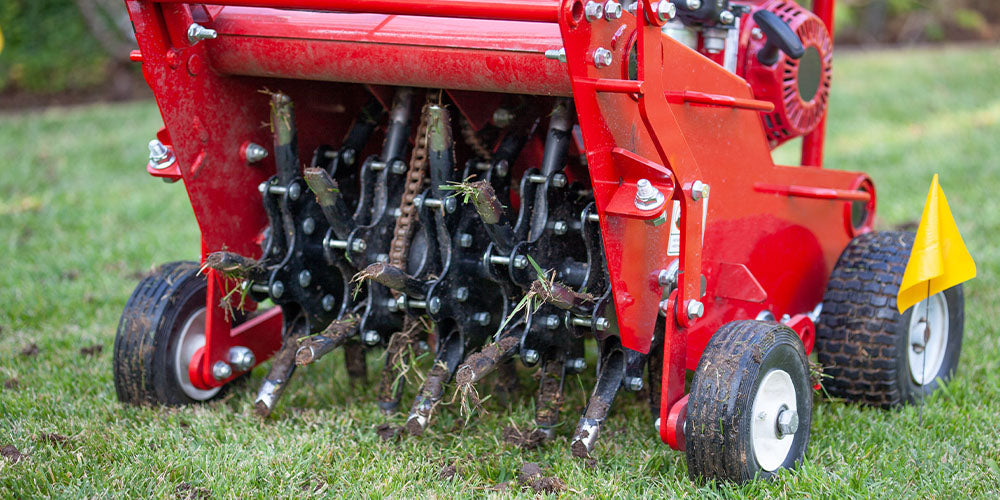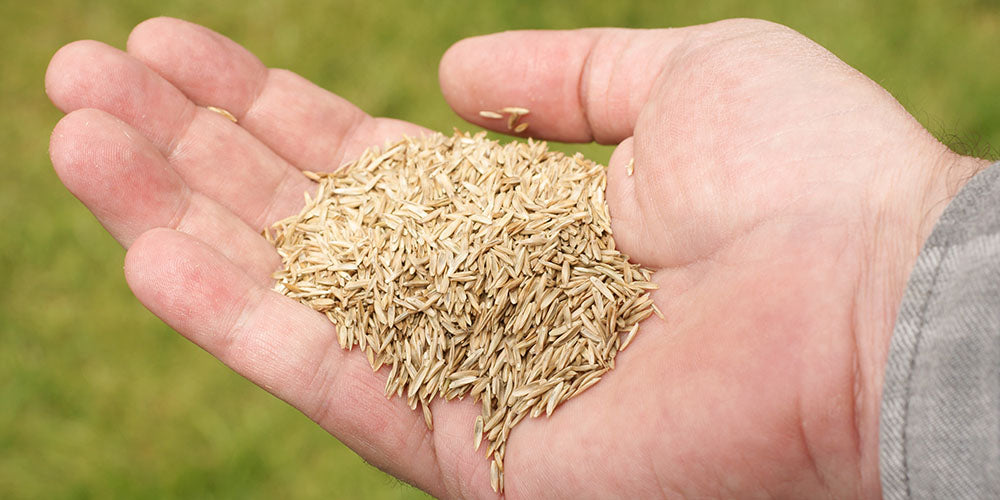Before your lawn goes into hibernation, follow these tips for aerating and caring for your grass.
Autumn is approaching: a time to cozy up by the fire and enjoy the changing of the seasons. But before you get to pull on your favorite cozy sweater, it’s time to roll up your sleeves and get your lawn ready for next year. Read on for our guide to aerating your lawn and other yard care tips.
When to Aerate Your Lawn
We commonly aerate our lawns in the spring, but it’s equally important to do it again in the fall. Aerating your lawn before the first frost is like giving it an extra workout before its big competition, and Jack Frost can be a tough competitor! When you aerate in the fall, you are giving the roots a chance to get another boost of strength before winter sets in. Meanwhile, aerating your lawn in spring can “wake up” your soil. It speeds up the growing process by allowing nutrients, water, and sunlight to reach more deeply and get the roots growing more.

When Should You NOT Aerate Your Lawn?
While early spring and early fall are a good rule of thumb for when to aerate your lawn, it does depend on a few factors. Most of us have cool-season grass in Iowa, but folks in warmer climates have warm-season grasses, which should only be aerated in late spring or early summer. You should also not aerate very dry soil; try adding some moisture before you attempt to aerate it.The Benefits of Aerating your Lawn
Aeration will breathe new life into struggling soil. If your grass is patchy, sparse, or struggling, aeration may be the key to a healthier, thriving yard. Lawns need air, nutrients, water, and light in order to grow more fully. These elements combined will help the grass roots in your lawn to grow more widely and stronger. Aerating is simply perforating holes into the soil, but this simple step can have magical effects on your lawn!
How to Aerate Your Lawn in the Fall
First, you’ll have to choose your method of aeration. Plug aerators will dip into the soil and pull out entire plugs, creating more space in the soil. Spike aerators will drill holes in the soil, but may not fully help with soil compaction. If you can, aerate on a day after it has rained; if not, you’ll need to do some watering to get the soil nice and moist. You can leave the soil plugs on the grass, and when you’re aerating in early fall, you’ll have time to let them dry out. Once dried, feel free to cruise over them with the lawnmower, returning the soil back from whence it came.

Overseeding Your Lawn in Fall
After your therapeutic aeration session, you should try overseeding your lawn. Over time, grass gets thinner and more sparse, so it’s a good idea to get into a routine of adding grass seed annually—and after aeration is the best time to add seed! When you sprinkle the grass seed, you’ll need to make sure it’s making direct contact with the soil so it can germinate. For better results, try raking the seed in so it’s evenly distributed throughout your lawn.
How to Fertilize Your Lawn in Fall
Your final step for taking care of your lawn in the fall after you aerate and seed the grass is to add fertilizer. Fertilizing in fall adds much-needed nutrients your grass needs to become a full, lush lawn when spring arrives. While you can always do a soil test to get specific with your lawn’s needs, it’s usually safe to go with a fertilizer that has potassium in it, which is very important for lawn health. Make sure you fertilize once the peak-growing season is over. You want the fertilizer to go toward growing the roots of the grass, and not the greenery above.
If you are looking for more help with fertilizing, seeding, and aerating your fall lawn in Bettendorf, come visit us! We’d be happy to help you get your lawn looking and feeling its best!



